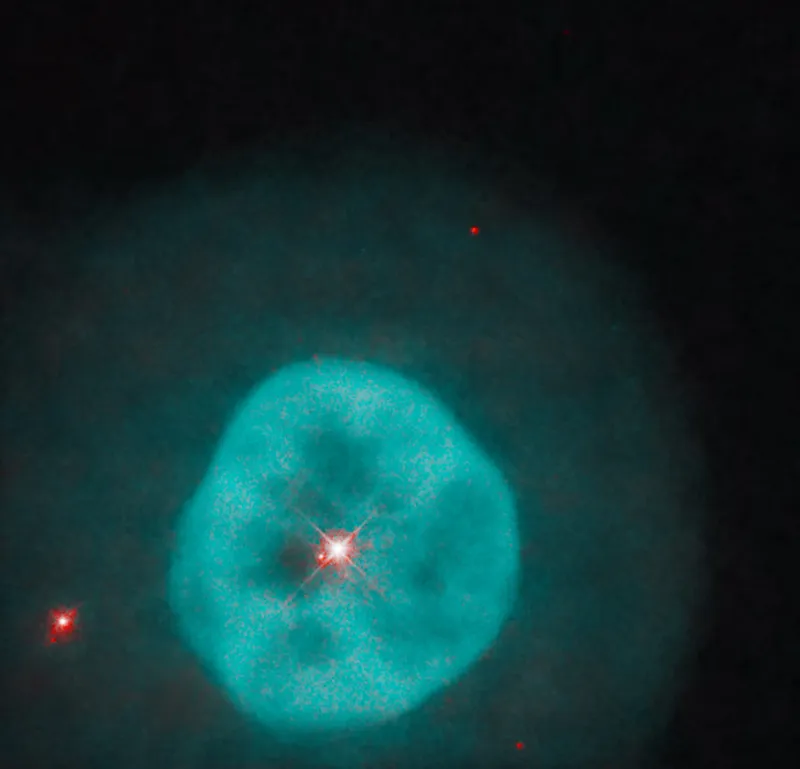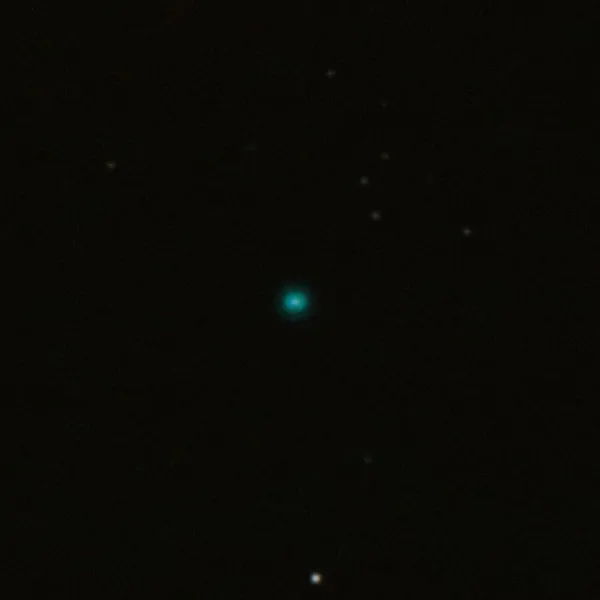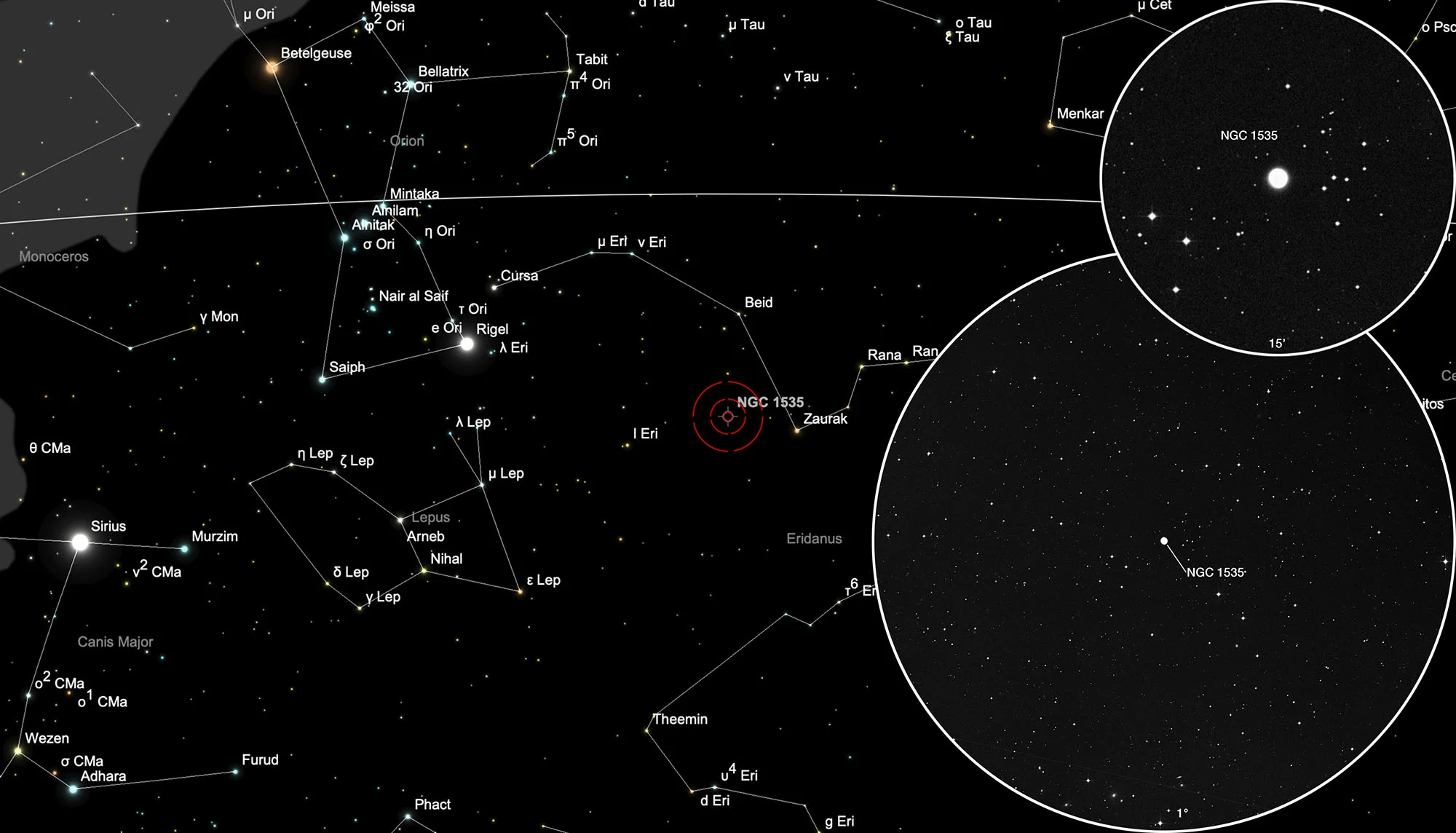Cleopatra’s Eye (NGC 1535)

History
This planetary nebula was discovered on 1 February 1785 by William Herschel, observing with his large his 18.7 inch reflecting telescope of 20 feet focal length, located in Slough, England. He cataloged it as IV 26 and noted: «Very bright, perfectly round or very little elliptical, planetary but ill defined disk. 2nd observation. resolvable on the borders, and is probably a very compressed cluster of stars at an immense distance.» [463]
Herschels son John cataloged this nebula as h 2618, but did not include it in his Slough catalogue published in 1833. [466] In his «General Catalogue» of 1864 he listed it under the designation GC 826 and classified as globular cluster with the comments: «Very bright, small, round pretty suddenly very suddenly brighter in the middle, resolvable.» [467] In Dreyer's «New General Catalogue» appeared in 1888 the object is listed as NGC 1535 and classified as planetary nebula. [313]
Physical Properties
The planetary nebula NGC 1535 shows an unusual structure that is similar to the better-known Eskimo Nebula (NGC 2392). The nebula consists of a bright inner annular ring of diameter 20×17 arcseconds with the major axis oriented approximately at position angle 35°. It is surrounded by a attached, much fainter outer oval disc of 48×42 arcseconds size. The kinematics of NGC 1535 can be explained by assuming the inner shell to be of a spherical form but constricted by a torus of dens material. It expands with 21 km/s. The faint outer shell is spheroidal in form and expans slower with just 7.5 km/s. [478] Observations indicate that this PN is part of a gravitationally bound binary star system. [477]
The PN is located at a high galactic latitude. Measured distances are ranging from 1.2 kpc to 2.3 kpc. [145] Also the visual magnitudes found vary from 9.6 mag [149, 277] to 12.8 mag [145], probably confusing the brightness of the nebula with that of the central star.
| Designations | PN G206.4-40.5: NGC 1535, PK 206-40.1, ARO 22, VV 19, VV' 25 |
| Right Ascension (J2000.0) | 04h 14m 17s |
| Declination (J2000.0) | -12° 44' 11" |
| Dimensions | 21." (optical) |
| Distance | 2.1 kpc |
| Radial Velocity | -3.2 ± 1.4 km/s |
| Expansion Velocity | 20. (O-III) km/s |
| C-Star Designations | AG82 29, BD -13 842, GCRV 2426, HD 26847, TD1 31084 |
| C-Star Magnitude | B: 12.19, V: 12.18 |
| C-Star Spectral Type | O5, O(H) |
| Discoverer | HERSCHEL 1785 |
Finder Chart
The planetary nebula NGC 1535 can be found in the constellation Eridanus, which is west of Orion and snakes southwards. The best observing time are the months July to May.
Visual Observation

320 mm Aperture: The PN is easy to find and appears as a bright, fuzzy disk even at low magnification. With increasing magnification, darker structures appear in the nebula and the central star becomes visible. One also believes to see the few small stars in the disk of the PN, which led Herschel to believe that this is an unresolved globular cluster. A very beautiful planetary nebula! — Stefans 320 mm f/5 Dobsonian, 5 mm Baader Hyperion eyepiece, waxing crescent moon, -6 °C, a little bright, hazy sky plus stupid outdoor lighting of the restaurant, Ibergeregg, 5. 2. 2022, Bernd Nies
400 mm Aperture: The nebula appears bluish and has a two-shell structure. Looks a bit like the Eskimo Nebula under bad conditions. The central star is clearly visible. — 400 mm f/4.5 Taurus Dobsonian, Hasliberg, SQM 21.0, 3. 2. 2024, Bernd Nies
635 mm Aperture: At higher magnification (10 mm Tele Vue Delos eyepiece, 254x), the PN displays a two-shell structure with a brighter inner region and a darker outer region. The central star is very prominent. Dark spots can be discerned within the inner, brighter area. — 25" f/4 Obession Dobsonian, Astrofarm Tivoli, Namibia, 16. 9. 2023, Bernd Nies
762 mm Aperture: In Cleopatra's Eye or NGC 1535, the clearly visible central star appears in a bright, followed by an outer, fainter shell of the planetary nebula, similar to the Eskimo Nebula NGC 2392. — 30" SlipStream-Dobson f/3.3, EAA-Photo, Canon EOS R, 4s at ISO 6'400, Hasliberg, SQM 21.3, 3. 2. 2024, Eduard von Bergen
